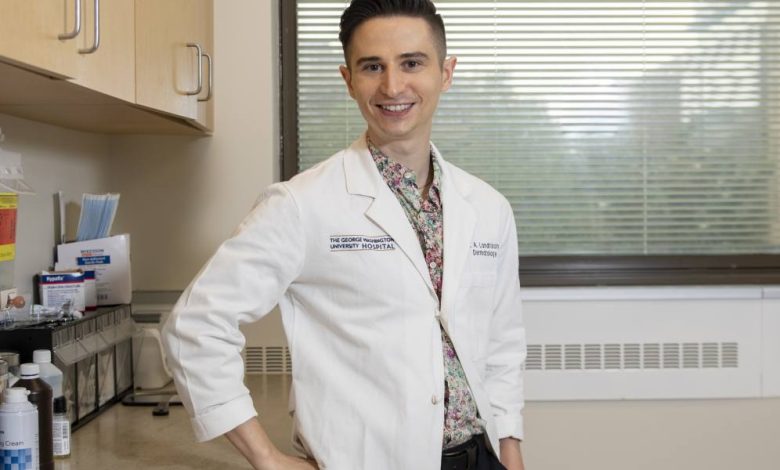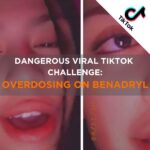Counter Misinformation on TikTok: Pediatric Dermatologists’ Charge at SPD Meeting

Experts at the Society for Pediatric Dermatology (SPD) 2023 Annual Meeting, have warned that TikTok, along with several other social media platforms, has been intentionally repositioned to compete with Google as a primary source of information. This shift has significant implications for healthcare professionals, especially those providing dermatologic care to children, as they must now consider ways to counter myths, erroneous facts, and fake news prevalent on these platforms.
Dr. Angelo Landriscina, the director of dermatology at a Mount Sinai Doctors Clinic in Brooklyn, New York, stressed the importance of healthcare professionals getting involved on social media to combat misinformation. He emphasized that if they do not actively participate, they are essentially allowing misinformation to prevail, which can have serious consequences for public health. Thus, healthcare professionals, including dermatologists, should actively engage on platforms like TikTok to provide accurate and evidence-based information.
One major concern highlighted by Dr. Landriscina is the quality of medical content available on these social media platforms. Currently, most of the content on medical topics, including dermatology and pediatric dermatology, is created by individuals who lack expertise in medical care. Consequently, the information provided is often of low quality and can even be entirely erroneous.
Dr. Landriscina has been using social media, including TikTok, for several years to combat misinformation related to dermatology. He often responds to misinformation by presenting evidence-based counterarguments with references to reputable sources. Despite initial criticism from colleagues who viewed social media as an inappropriate platform for objective medical information, Dr. Landriscina argues that this perception has changed significantly.
TikTok, in particular, poses unique challenges due to its lack of a mechanism for verifying the credibility of information sources. Unlike YouTube, which requires some form of validation for individuals claiming to have medical degrees or other verifiable qualifications, TikTok lacks such requirements. This absence of vetting opens the door for anyone, regardless of their expertise, to present themselves as knowledgeable on medical topics.
Additionally, TikTok’s algorithm is designed to prioritize content with viral potential. This means that provocative and controversial videos tend to be promoted more, irrespective of their accuracy. This algorithmic bias can lead to the spread of misleading or false information, further complicating the fight against misinformation.
The impact of social media, particularly TikTok, on the dissemination of medical information, has become a topic of concern and interest among healthcare professionals. While the algorithm used by TikTok does not discriminate based on the validity of information, it still provides a platform for videos to be posted without regard to their accuracy. As a result, content that has already gone viral tends to attract more attention, making it easier for medical professionals to respond to popular posts with clear and digestible information to reach a wider audience.
Contrary to the misperception that TikTok’s audience is predominantly young, data from Landriscina indicates a diverse user base, with significant numbers of older users as well. This suggests that medical professionals should not only cater to the needs of younger viewers but also recognize that parents of children with skin diseases are actively seeking information on the platform.
Understanding the TikTok algorithm proves challenging due to its proprietary nature, as it generates different results for every user. Past behavior on the app influences the content displayed, creating a personalized experience for each individual. This element has its roots in the “parasocial interaction theory” that originated with the advent of television, wherein users develop a sense of trust in influencers, considering them akin to friends who provide reliable advice on various topics, even beyond their expertise.
Recognizing the influence and potential harm of misinformation on social media platforms like TikTok, Landriscina advocates for medical professionals to actively engage on such platforms. With a high interest in dermatologic conditions in children, there is a genuine need for accurate information to counteract any misleading or harmful content.
During the question-and-answer session following Landriscina’s presentation, there were varying opinions on the subject. Some expressed concern that medical professionals might express personal opinions without relying on evidence, potentially adding to the sea of misinformation. However, the prevailing sentiment among attendees was that social media’s impact is irreversible, and instead of resisting it, professionals should embrace it responsibly.
Dakara R. Wright, a dermatologist, stressed the importance of being present on social media for the benefit of patients and their parents. She acknowledged that social media has become a major source of medical information for patients and underscored the need for responsible engagement.
Candrice R. Heath, an assistant professor of dermatology, has been active on social media for years, leveraging the platform to draw attention to her expertise. Like Landriscina, she recognizes the influential role of social media content in shaping healthcare decisions and supports the idea that medical professionals should not disregard this phenomenon.
To provide effective content on TikTok, Landriscina advises clinicians to keep their videos easy to watch and visually appealing. While accurate information should remain the primary focus, presenting surprising facts in a calm and coherent manner can be particularly effective in attracting an audience when responding to misleading or viral misinformation.
Society for Pediatric Dermatology (SPD) 2023 Annual Meeting Was Held On July 15th, 2023.





